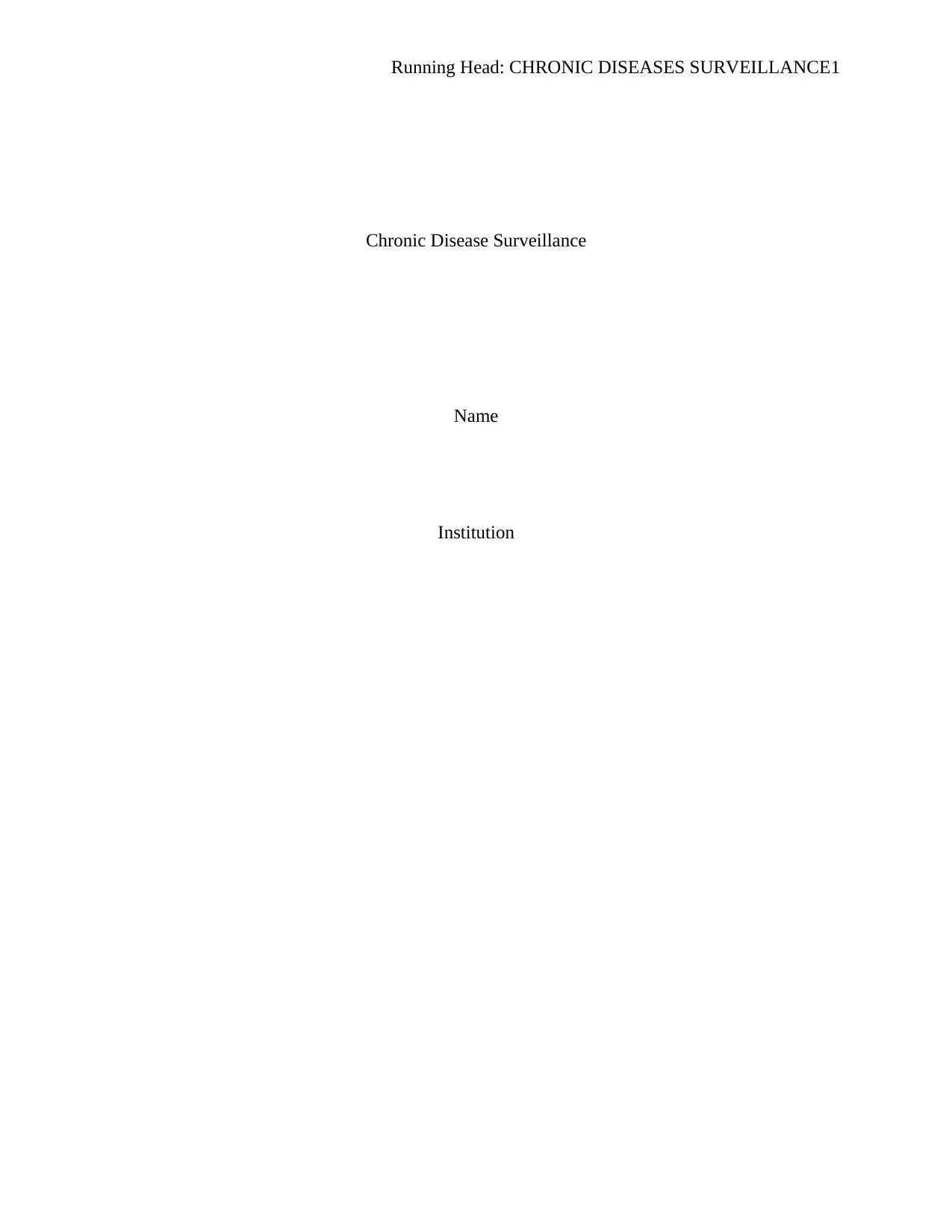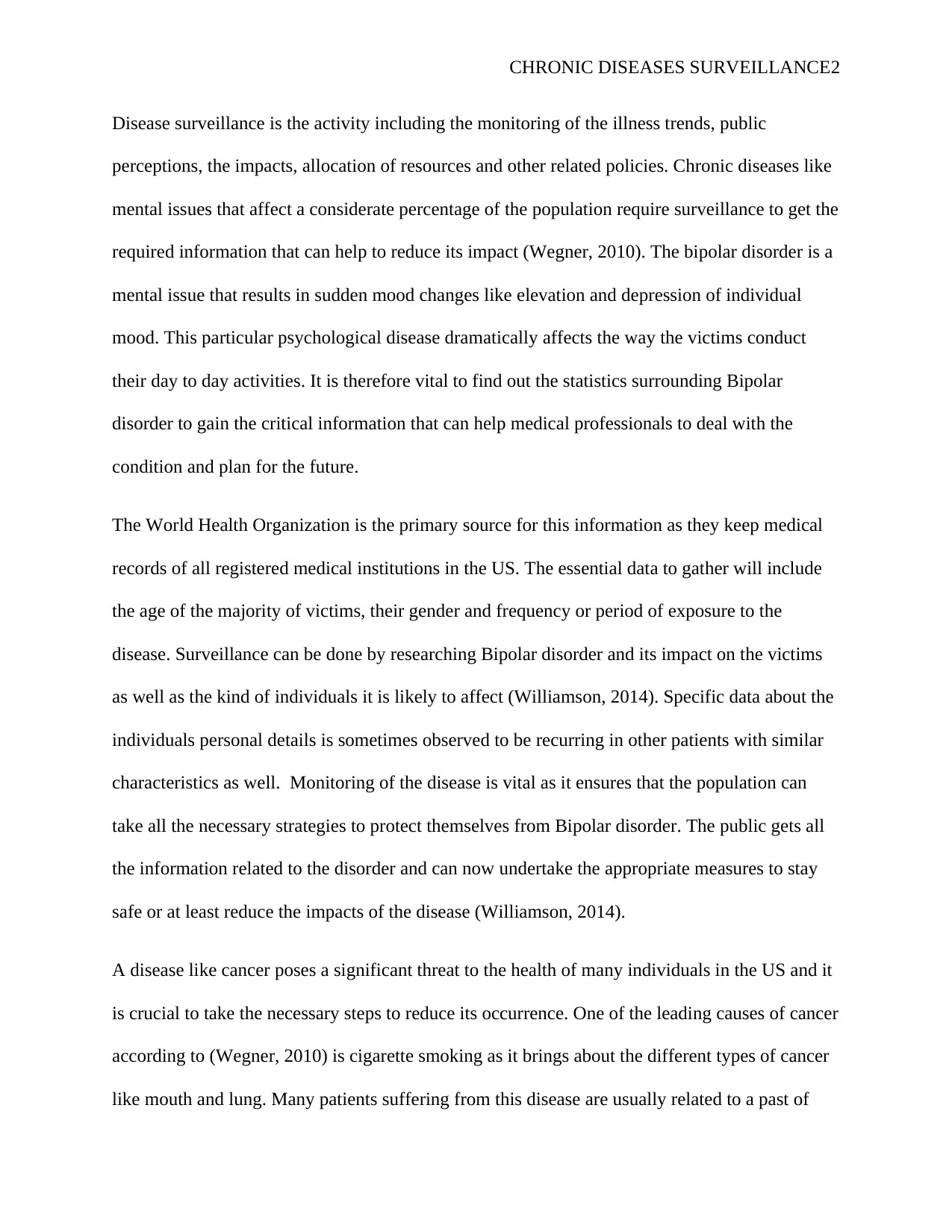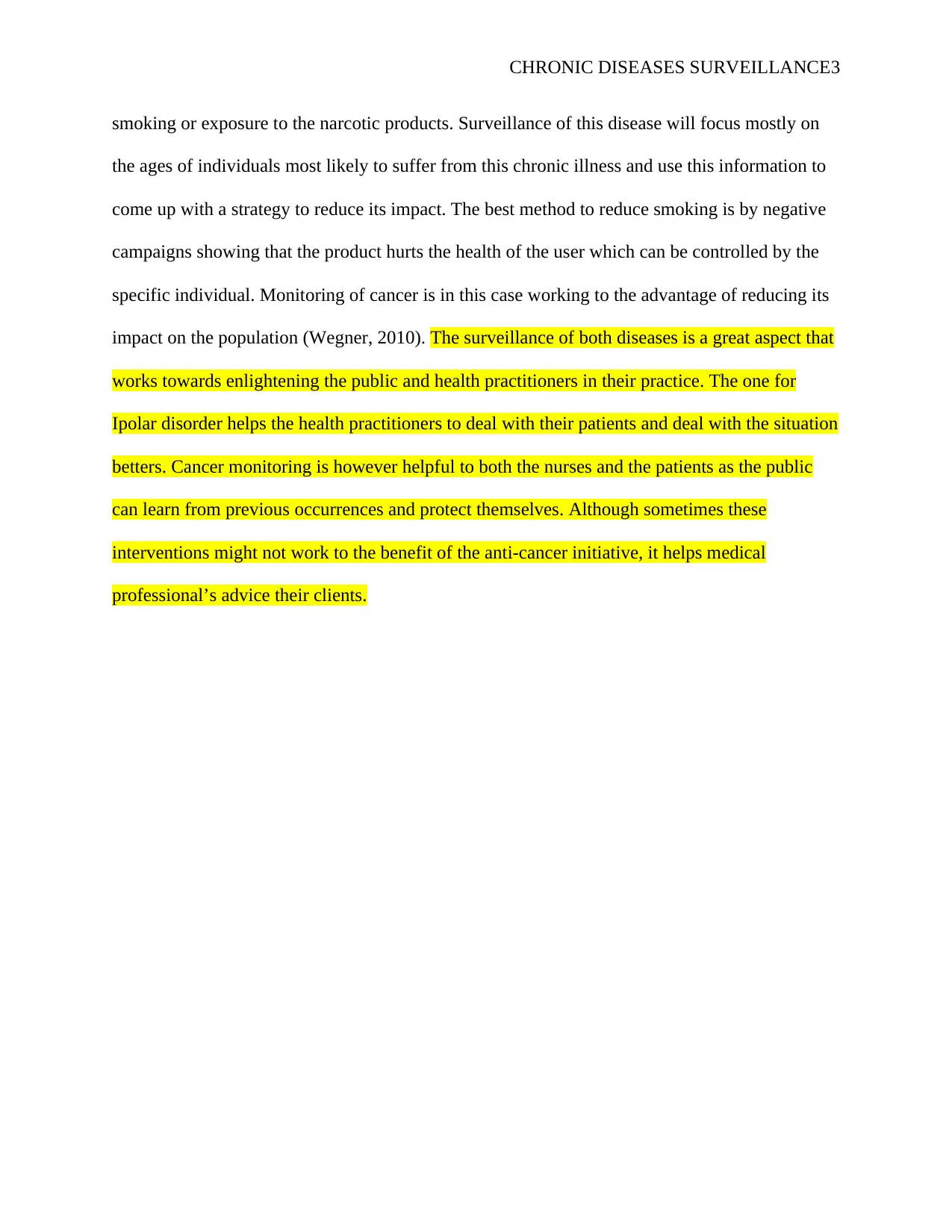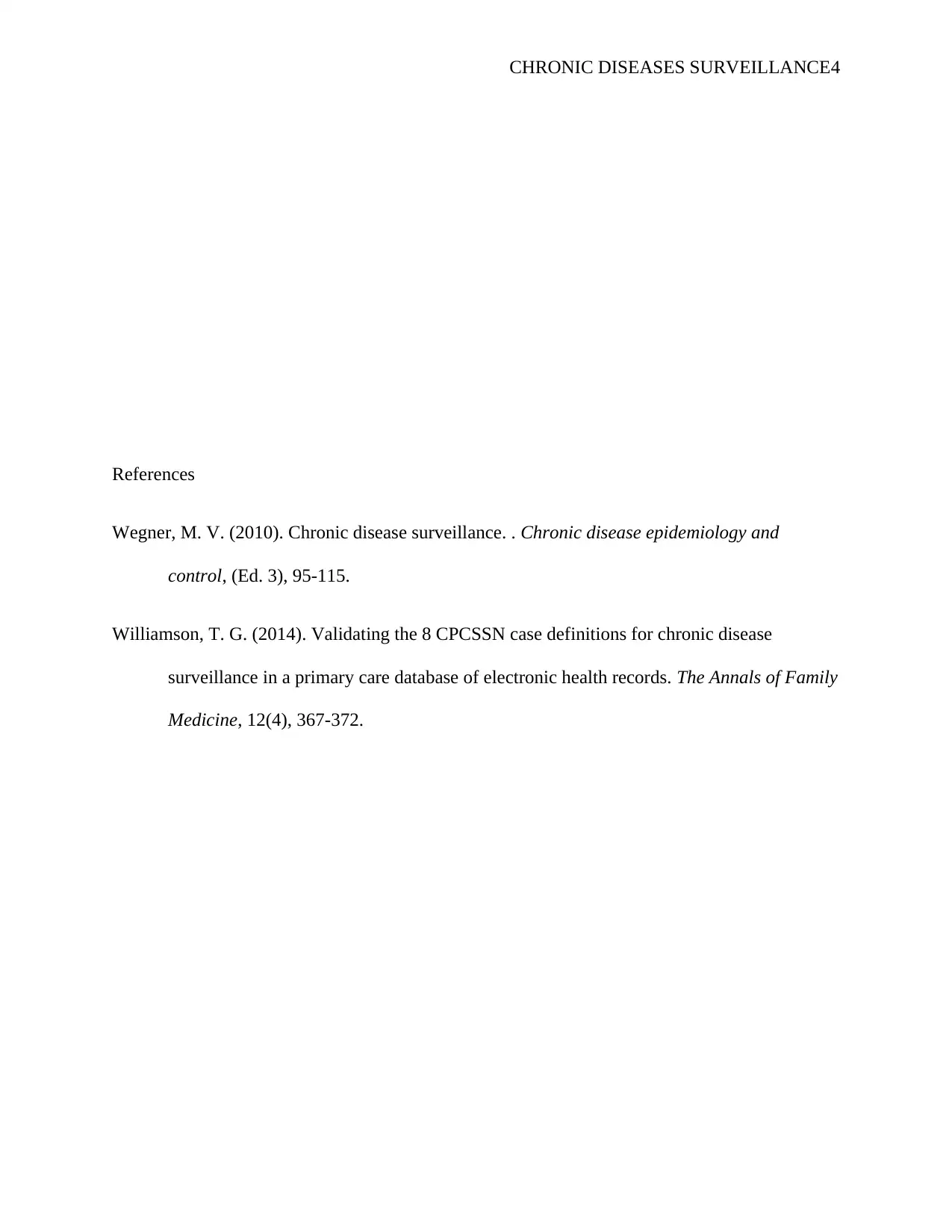Chronic Disease Surveillance: A Comparative Analysis of Two Diseases
VerifiedAdded on 2020/03/23
|4
|643
|88
Report
AI Summary
This report examines chronic disease surveillance, focusing on the monitoring and analysis of two significant health issues: Bipolar Disorder and Cancer. The report emphasizes the importance of surveillance in understanding disease trends, public perceptions, and the allocation of resources. It highlights the impact of Bipolar Disorder on individuals' daily lives and the need for data collection to inform medical interventions. The report also discusses the role of the World Health Organization in collecting relevant data. Furthermore, the report analyzes the causes and impact of cancer, particularly the link between smoking and various types of cancer, emphasizing the importance of public health campaigns and monitoring efforts to reduce its prevalence. The report concludes by highlighting the benefits of disease surveillance for both healthcare practitioners and the public, emphasizing the importance of informed decision-making and preventative measures.
1 out of 4










![[object Object]](/_next/static/media/star-bottom.7253800d.svg)